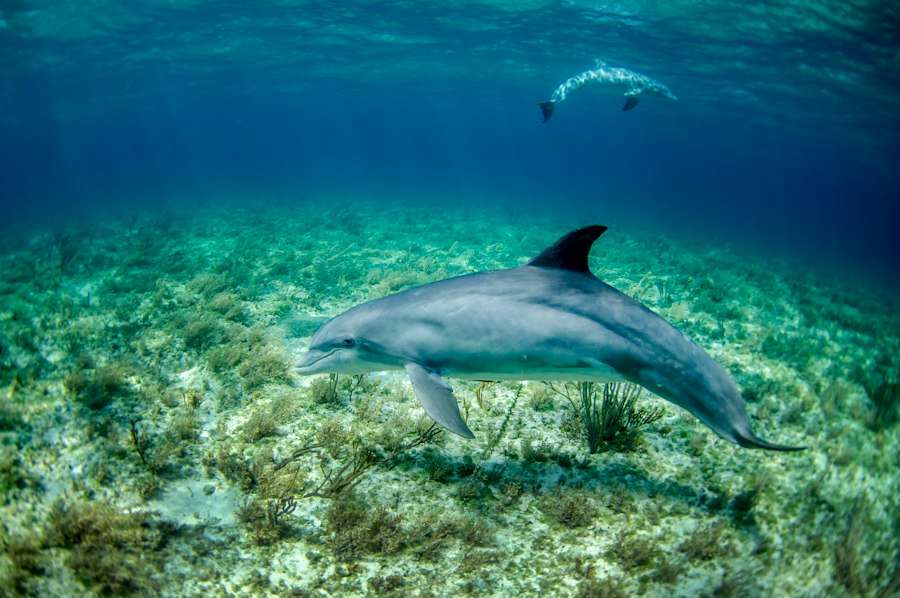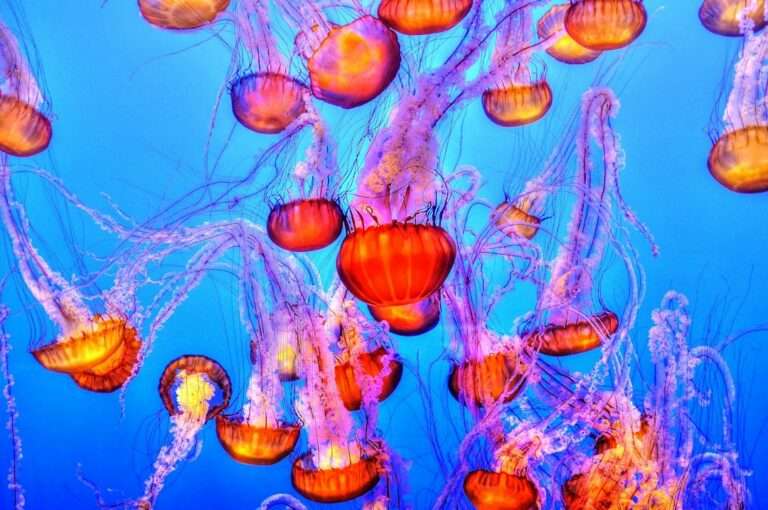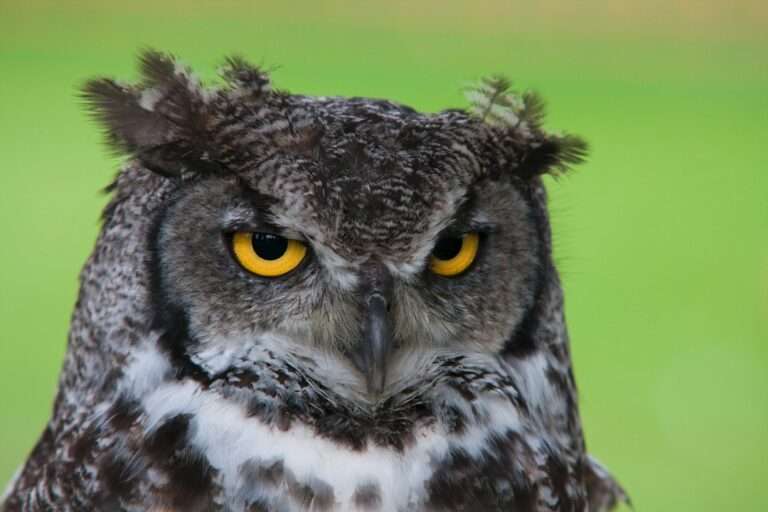Diving into the Deep: Exploring the Profound Symbolism of Dolphins

Dolphins are one of the most captivating creatures on Earth. With their sleek bodies, playful nature, and intelligence, they have captured the hearts and imaginations of people around the world. Dolphins belong to the family Delphinidae and are known for their unique characteristics such as their ability to swim at high speeds, communicate using a complex system of clicks and whistles, and their playful behavior.
Key Takeaways
- Dolphins have a rich cultural significance in mythology and folklore across the world.
- Various spiritual traditions view dolphins as symbols of healing, protection, and spiritual guidance.
- Scientific studies have revealed complex communication and social behavior among dolphins.
- Dolphins play a crucial role in conservation and environmentalism efforts, as they are indicators of ocean health.
- Dolphin therapy has shown potential in improving physical and mental health in humans.
The Cultural Significance of Dolphins in Mythology and Folklore
Dolphins have played a significant role in mythology and folklore across different cultures throughout history. In Greek mythology, dolphins were associated with the god Poseidon and were believed to be his messengers. They were also seen as protectors of sailors and were often depicted as guiding lost ships to safety. In Celtic folklore, dolphins were believed to be shape-shifting creatures that could take on human form. They were seen as symbols of transformation and wisdom.
In Hindu mythology, dolphins were associated with the god Ganga, who is often depicted riding on a dolphin. Dolphins were seen as sacred creatures and were believed to bring good luck and fortune. In Maori culture, dolphins were seen as guardians of the sea and were believed to be the reincarnations of ancestors. They were seen as protectors and guides for those at sea.
The Spiritual Meaning of Dolphins in Various Traditions
Dolphins hold a special place in many spiritual and religious traditions around the world. In ancient Greece, dolphins were seen as symbols of divine love and protection. They were associated with Aphrodite, the goddess of love, and were believed to bring blessings to those who encountered them.
In Native American traditions, dolphins were seen as messengers from the spirit world. They were believed to carry messages from ancestors and spirits and were seen as guides for those seeking spiritual guidance. In some African cultures, dolphins were seen as symbols of fertility and were believed to bring blessings to couples trying to conceive.
The Scientific Study of Dolphin Behavior and Communication
| Metrics | Values |
|---|---|
| Number of dolphin species studied | 40 |
| Number of years of research | over 50 |
| Number of vocalizations identified | over 80 |
| Percentage of dolphin communication that is non-vocal | 50% |
| Number of social behaviors observed | over 100 |
| Percentage of dolphin communication that is directed towards humans | less than 1% |
Scientists have been studying dolphin behavior and communication for decades, and their research has revealed fascinating insights into the lives of these intelligent creatures. Dolphins are known for their complex social structures, with individuals forming strong bonds and living in tight-knit groups called pods. They are also highly intelligent and have been shown to possess self-awareness, problem-solving abilities, and the ability to learn complex tasks.
One of the most intriguing aspects of dolphin behavior is their communication system. Dolphins use a complex system of clicks, whistles, and body movements to communicate with each other. They can produce a wide range of sounds, each with its own meaning, and can even mimic the sounds of other animals. Scientists believe that dolphins use their communication skills to coordinate hunting strategies, navigate their environment, and maintain social bonds within their pod.
The Role of Dolphins in Conservation and Environmentalism
Dolphins play a crucial role in marine ecosystems and are considered to be indicator species for the health of the oceans. As top predators, they help to maintain the balance of marine food chains by controlling the populations of their prey species. They also play a role in nutrient cycling by consuming dead or dying organisms and recycling nutrients back into the ecosystem.
Unfortunately, dolphins face numerous threats from human activities. Pollution, habitat destruction, overfishing, and entanglement in fishing gear are just some of the challenges that dolphins face. Conservation efforts are underway around the world to protect dolphin populations and their habitats. These efforts include establishing marine protected areas, implementing regulations to reduce bycatch in fishing gear, and raising awareness about the importance of dolphins in marine ecosystems.
The Healing Power of Dolphin Therapy

Dolphin therapy is a form of alternative therapy that uses interactions with dolphins to promote physical and emotional healing. It is believed that the gentle nature of dolphins and their ability to form emotional connections with humans can have a positive impact on individuals with physical or mental health conditions.
Dolphin therapy has been used to treat a wide range of conditions, including autism, depression, anxiety, and physical disabilities. The therapy typically involves swimming or interacting with dolphins in a controlled environment under the guidance of trained professionals. Proponents of dolphin therapy believe that the vibrations and sounds produced by dolphins can have a calming effect on the nervous system and promote relaxation and healing.
The Connection Between Dolphins and Human Consciousness
Dolphins have long been associated with higher states of consciousness and spiritual awakening. Some theories suggest that dolphins possess a level of consciousness that is similar to or even surpasses that of humans. They are believed to be highly intelligent beings with a deep understanding of the natural world.
In metaphysical beliefs, dolphins are seen as spiritual guides and messengers from higher realms. They are believed to possess healing energies and can help humans connect with their own inner wisdom and intuition. Many people report feeling a deep sense of peace and connection when they encounter dolphins in the wild or participate in dolphin-assisted therapy.
The Artistic Inspiration of Dolphins in Literature, Art, and Film
Dolphins have long been a source of inspiration for artists, writers, and filmmakers. Their graceful movements, playful nature, and mysterious allure have been captured in countless works of literature, art, and film.
In literature, dolphins have been featured in classic works such as Herman Melville’s “Moby-Dick” and Jules Verne’s “Twenty Thousand Leagues Under the Sea.” They are often depicted as symbols of freedom, intelligence, and the beauty of the natural world.
In art, dolphins have been depicted in various forms, from ancient cave paintings to modern sculptures. They are often portrayed as symbols of joy, harmony, and spiritual awakening. In film, dolphins have been featured in popular movies such as “Flipper” and “Dolphin Tale,” where they are portrayed as intelligent and compassionate creatures.
The Intriguing Relationship Between Dolphins and Humans
Humans have had a long and complex relationship with dolphins throughout history. Dolphins have been revered and worshipped in some cultures, while in others they have been hunted for their meat and oil. In recent years, there has been a growing appreciation for dolphins as sentient beings deserving of protection and respect.
There are numerous examples of unique relationships between dolphins and humans. In some cases, dolphins have formed close bonds with individual humans, seeking out their company and even assisting them in times of need. There are stories of dolphins rescuing swimmers from sharks, guiding lost sailors to safety, and providing comfort to people in distress.
The Future of Dolphin Research and Conservation Efforts
As our understanding of dolphins continues to grow, so does our responsibility to protect and conserve these amazing creatures. Ongoing research is shedding light on the complex social structures, communication systems, and cognitive abilities of dolphins. This knowledge is crucial for developing effective conservation strategies and ensuring the long-term survival of dolphin populations.
Conservation efforts are also underway to address the threats facing dolphins and their habitats. These efforts include establishing protected areas, implementing sustainable fishing practices, reducing pollution, and raising awareness about the importance of dolphins in marine ecosystems.
In conclusion, the world of dolphins is a fascinating one that encompasses mythology, spirituality, science, conservation, therapy, art, and human-dolphin interactions. Dolphins have captivated our imaginations for centuries with their intelligence, grace, and playful nature. As we continue to learn more about these incredible creatures, it is important that we also take steps to protect them and ensure their survival for future generations to enjoy.
If you’re interested in exploring the symbolism of dolphins, you might also find the article on the symbolism of the moon intriguing. The moon has long been associated with mystery, intuition, and feminine energy. Just like dolphins, it holds a special place in various cultures and carries deep symbolic meanings. To delve deeper into this fascinating topic, check out the article on what the moon symbolizes.
FAQs
What is dolphin symbolism?
Dolphin symbolism refers to the various meanings and interpretations associated with dolphins in different cultures and belief systems.
What do dolphins symbolize in Greek mythology?
In Greek mythology, dolphins were associated with the god Apollo and were seen as symbols of protection, guidance, and good luck.
What do dolphins symbolize in Christianity?
In Christianity, dolphins are often seen as symbols of resurrection and redemption, as they were believed to have saved the lives of drowning sailors and brought them to safety.
What do dolphins symbolize in Native American culture?
In Native American culture, dolphins are seen as symbols of harmony, balance, and communication, and are often associated with healing and spiritual guidance.
What do dolphins symbolize in Chinese culture?
In Chinese culture, dolphins are seen as symbols of good fortune, prosperity, and happiness, and are often depicted in artwork and literature as playful and joyful creatures.
What do dolphins symbolize in Hinduism?
In Hinduism, dolphins are associated with the god Ganga and are seen as symbols of purity, grace, and wisdom, as well as the power of the divine feminine.





